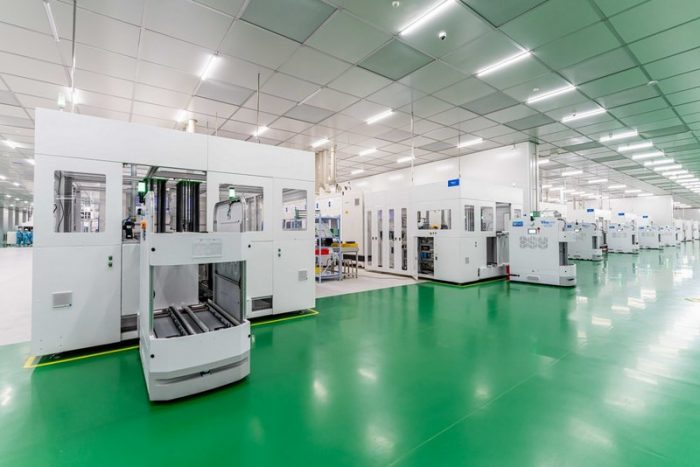
New data from market intelligence group TrendForce shows the solar module market is trending toward 210mm wafers. By the end of the year the production capacity of 210mm modules is forecast to reach 722GW, or 69.83% of total capacity, TrendForce said.
The increase in capacity and shipments demonstrates that large-format, high-power modules are rapidly advancing the development of the entire value chain. Furthermore, the power output of the 210mm n-type module has surpassed 700W, underlining the openness and innovation of 210mm product technology platform.
Here’s a breakdown of shipments of leading module manufacturers (Unit: GW):

Cumulative shipments of 210mm modules reached 150 GW by the end of June, with Trina Solar accounting for half of that, the global market intelligence provider TrendForce says. Among the 150GW 210mm module shipments, Trina Solar accounted for over 75GW.
With the mass production of Vertex N 700W+ modules, Trina Solar said in its half-yearly financial report that by the end of the year the company will have established production capacity of 50GW for n-type wafers and 75GW for cells, with n-type cells accounting for 40GW.
210mm wafer production capacity rose 89.3% over the year, with 210mm modules accounting for 70% of total module capacity
Why 201mm? Larger and thinner wafers have advanced rapidly, with the large-format wafers quickly dominating the market, thanks to big cost reductions and improvements in efficiency. Large-format wafer capacity is likely to reach 878.6 GW this year, accounting for market share of 95.33%, TrendForce said.
Particularly noteworthy is the fact that 210mm wafer capacity is tipped to reach 357.2GW, 89.3% more than last year.
Large-format cell capacity is likely to reach 1,136.2 GW this year, 96.93% of the total, TrendForce said. 210mm cell capacity is expected to reach 899.9GW, 179% more than last year. This growth will also increase its market share to 76.8%.
In the module segment, TrendForce estimates that large-format module capacity will reach 961 GW this year, with market share of 92.84%. The production capacity of 210mm modules is forecast to rise to 722GW, 116% more than last year, accounting for 69.83% of total capacity. Capacity is forecast to continue expanding in the coming years, cementing the mainstream position of large-format modules in the market.
High-power, large-format modules account for more than 90% of bidding activity, and the market penetration of n-type modules is accelerating
Thanks to cost reductions and improvements in efficiency and expanding application settings, the high-power, large-format modules now account for more than 90% of bidding activity. TrendForce forecasts that continuing cost reductions and improvements in efficiency will continue to propel the shipment of large-format modules this year with shipments exceeding 85%.
In the realm of n-type modules, HJT modules are primarily 210mm, while TOPCon modules are mostly 210mm (210R) and 19X. When 210mm (210R) n-type modules are compared with 19X n-type modules, the former significantly outperform the latter in power output. The 210mm n-type technology is set to deliver increased value across the industrial chain and the end market, thus promoting high-quality development of the photovoltaic industry.
— Solar Builder magazine

Leave a Reply
You must be logged in to post a comment.